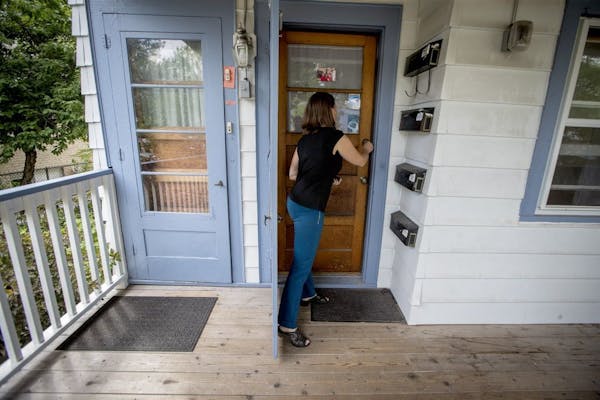Minneapolis planners released detailed revisions Friday afternoon to a long-term vision for the city that has stoked debate over density, traffic and racial inclusivity.
Considering feedback from City Council members and thousands of public comments, the new version of the Minneapolis 2040 Comprehensive Plan pulls back some of the original density goals. But the changes weren't enough to satisfy opponents of the plan, while supporters criticized it for making too many concessions to what they called a vocal minority.
Instead of rezoning all residential areas to allow for up to four-unit properties, the new plan would make way for up to three units. These structures would need to fit into the height, mass and other requirements of the single-family homes currently on those lots.
Planners also reined in a plan to allow for six-story buildings along a number of high-frequency bus lines, reducing it to four stories north of Lowry Avenue and south of 38th Street.
People were still digging into the details on Friday afternoon, such as a change reducing allowed density near the proposed Southwest light rail line by the Chain of Lakes.
The city's long-range planning director, Heather Worthington, said a dozen staffers split up the roughly 10,000 public comments about the first draft of the plan, which was released in March. They read every one, she said, and revised the plan to accommodate some of those concerns.
"I think we have done a very robust and very deep process of considering the comments that we received," Worthington said.
Neighbors for More Neighbors, a group that favors a more densely populated Minneapolis, generally supports the plan but was disappointed with some of the changes, said Janne Flisrand, a representative of the group.
"Many of these major changes will result in fewer homes and higher rents, especially near transit corridors," Flisrand said. "It will continue to funnel most development into the neighborhoods that are home to our city's most vulnerable residents."
Carol Becker, a leader of Minneapolis for Everyone, a group that has criticized the 2040 plan's density changes, complained that the plan still upzones the entire city, and said having four-story buildings along bus lines is still "way out of scale."
"People are really mad. And they're already organizing in the last two hours because my phone has been like, 'beep, beep, beep' about, 'Can you believe that we just got blown off?' " said Becker, who also holds an elected position on the city's Board of Estimate and Taxation.
Council members had been briefed on changes in recent weeks, but saw the full revisions for the first time Friday.
Council President Lisa Bender said the new version reflects what the city's been hearing from residents. It's not perfect, she said Friday.
But there's still time for council members and the public to weigh in before the council votes on a final version, and Bender plans to hold another ward meeting to get feedback on the second draft.
"This is still pretty far from the final plan," Bender said.
The plan must be submitted to the Metropolitan Council, which oversees the region's land use, by the end of the year. Worthington said the planning commission will hold a public hearing Oct. 29, likely followed by a City Council hearing during the week of Nov. 12. She said they will ask the City Council to vote Dec. 7.
Some in City Hall weren't impressed. Council Member Linea Palmisano said 95 percent of the 2,000 comments she's received have been critical of the original draft, many of them skeptical that the plan will accomplish its intended goal of economic inclusivity.
Palmisano's ward is largely zoned for single-family homes, meaning it stands to see some of the biggest changes if the plan is approved.
"The changes that they've made seem like they're nibbling around the edges and getting defensive about their first draft," said Palmisano. "At what point are we self-aware enough to say, 'Maybe that wasn't good?' "
Andy Mannix • 612-673-4036

Minnesota State Patrol celebrates diverse new class of troopers

Records: Former Minneapolis police oversight head disparaged women, threatened staff
Video goes viral of man enduring 'shocking' chain whipping on downtown St. Paul street
Minnesota sales, clean-ups and other events to celebrate Earth Day and Arbor Day

